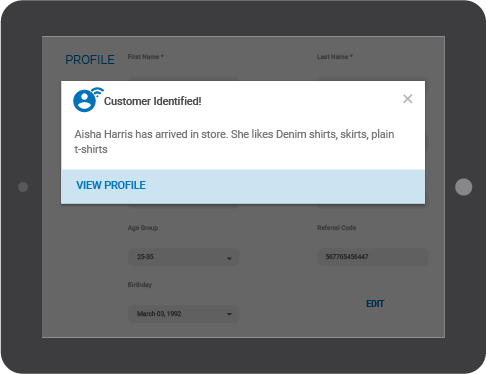Superstores are a complex set of stores to operate; they are a combination of a supermarket and a department store. Not only are hypermarkets massive with thousands of square feet in area, but they also have thousands of different products and are visited by hundreds of thousands of customers. With electronic POS software in nearly all superstores, they are now able to collect huge amounts of customer and transaction data, that’s truly big data! While maintaining the optimum supply chain logistics to optimize their operation, they also need to focus on the analysis of this data, which can help in increasing customer loyalty, optimizing their inventory and propping up their margin.
There are a lot of methodologies which can be deployed in the case of hypermarkets. Here I will be identifying the top 3 that are an absolute must for maximum benefits.
Customer Profiling
The customer is always King. The trick is treating all of them as kings, when you have hundreds of thousands or even millions of customers. Every customer is unique and has their own preference, schedule and history. The key to success is to identify each customer’s preference, figure out who your best customers are and which customers are the most likely to grow to become your most profitable customers. Other questions that should be asked are; what products attract your customers, which customers come frequently but spend less, and what are the key drivers that pull a customer into the store. This magnitude of data is hard to organize and analyze with only hundreds of customers, but in the case of bigger mid-sized retail chains, the customer counts run into hundreds of thousand to millions. Analyzing them as individuals per the business goals becomes a major challenge for all retailers.
Why this is needed: “Collecting data through loyalty programs will not increase your sales. Using that data to understand your customers and building engagement strategies around it will”. Once the retailer profiles his/her customer groups to a level where they can distinguish between ‘high loyal’, ‘deal seekers’, ‘value buyers’ and further narrow down the behavior to ‘female customers between 20 to 30 years of age’ or ‘people living in suburbs shopping primarily on weekends only’, they will be able to customize their merchandise and promotions to cater to each customer group’s specific needs.
How this can be done: Segmentation is the key to figure out who your customers are. The basic methodology uses a 3-axis segmentation, grouping customers by most recent visit, frequency of visits and spending habits. The more advanced methodologies use as many as 8-10 different parameters to cluster the customers, and create distinct groups that outline key behaviors for a customer. The more information the retailer has, the better the segmentation will be. Merging attitude and behavior with demographics can create micro-segments, which can also pinpoint and predict a customer’s behavior.
Benefits to the retailer: Creating the segments or the micro-segments is not enough. Only after each micro-segment is analyzed in detail and their KPIs studied, along with product purchasing behavior, spending pattern, etc the retailer will be able to a make an informed decision. Promotions can then be specifically created to reward specific customers. This will simultaneously reduce the cost of promotions significantly while increasing the customer’s response to promotions. Customer segmenting can also be used to push specific products to a specific group of customers, based on their micro-segment, purchase behavior and product affinity. The net result of all this is an increase in customer loyalty, a reduction in promotion cost, an increase in customer’s response to promotions and an increase in customer satisfaction with the retailer. Win. Win. Win.
How do you use customer profiling to improve margins and increase purchase behavior?
People also ask ⁝
1.What are the key big data methodologies for customer profiling in retail? Key big data methodologies for customer profiling in retail include data mining, machine learning algorithms, and predictive analytics, which help understand customer behavior and preferences.
2.How does big data improve customer profiling accuracy? Big data improves customer profiling accuracy by analyzing vast amounts of customer data to identify patterns, trends, and insights, enabling more precise and personalized marketing strategies.
3.What are the benefits of using predictive analytics in retail customer profiling? Predictive analytics in retail customer profiling helps businesses forecast customer needs, tailor marketing efforts, and enhance customer experiences, leading to increased loyalty and sales.
4.How can superstores leverage big data for better customer segmentation? Superstores can leverage big data for better customer segmentation by using analytics to divide their customer base into distinct groups based on behavior, preferences, and demographics, allowing for more targeted marketing.
5.What tools are essential for implementing big data methodologies in retail? Essential tools for implementing big data methodologies in retail include data analytics platforms, machine learning software, and customer relationship management (CRM) systems, which help collect, analyze, and utilize customer data effectively.
